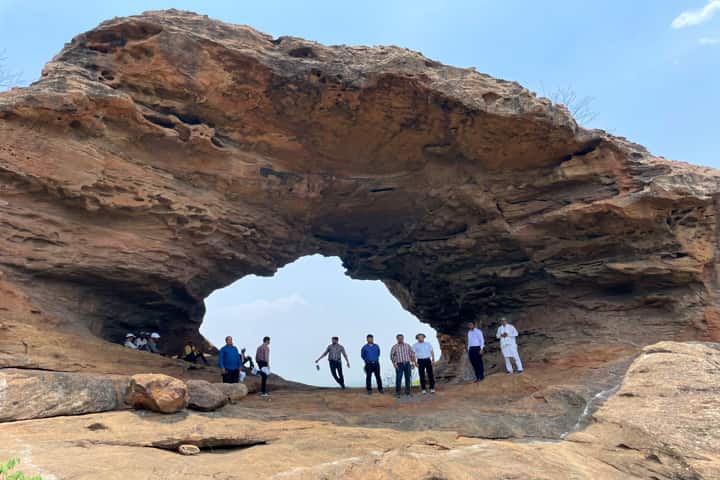Why in News:
- The state unit of the Geological Survey of India (GSI) has proposed to declare the ‘Natural Arch’ in the Kanika range of Sundargarh forest division, a Geo Heritage Site.
- If it is done, it will be the biggest natural arch of the country to have the Geo Heritage tag.
- Apart from the arch at Sundargarh, India has two others- one at Tirumala hills in Tirupati and another at Andaman and Nicobar. However, both of them are smaller compared to the one in Sundargarh.
About India’s Biggest Natural Arch:
- The Sundargarh natural arch, present in the ferruginous sandstone of the Upper Kamthi formation, dates back to about 184 to 160 million years in the lower to middle Jurassic age.
- It is an oval-shaped arch and has a length of 30 metres at the base and is 12 metres high.
- The alcove of the natural arch has a maximum height and width of 7 metres and 15 metres, respectively.
- The natural arch and its surrounding area is a storehouse of different primary sedimentary structures like planner and cross-bedding along with occasional current ripples signifying high energy fluvial environment during sedimentation.
- Formation: Formation of the natural arch could be due to fault activities and the nature of lithotype, which have enhanced the process of sub-aerial weathering over a long period.
What are Geo Heritage Sites (GHSs)?
- Geoheritage sites are sites of rare and unique geological, geo-morphological, mineralogical, petrological, and paleontological significance, including caves and natural rock sculptures of national and international interest.
- GSI declares geo-heritage sites/ national geological monuments for protection and maintenance.
- GSI or the respective State governments take necessary measures to protect these sites.
Q1) What is the Geological Survey of India (GSI)?
GSI was set up in 1851 primarily to find coal deposits for the Railways. Over the years, it has grown into a repository of geo-science information required in various fields in the country.
Source: India’s biggest natural arch formed 184 million years ago discovered in Odisha by GSI
Last updated on June, 2025
→ UPSC Notification 2025 was released on 22nd January 2025.
→ UPSC Prelims Result 2025 is out now for the CSE held on 25 May 2025.
→ UPSC Prelims Question Paper 2025 and Unofficial Prelims Answer Key 2025 are available now.
→ UPSC Calendar 2026 is released on 15th May, 2025.
→ The UPSC Vacancy 2025 were released 1129, out of which 979 were for UPSC CSE and remaining 150 are for UPSC IFoS.
→ UPSC Mains 2025 will be conducted on 22nd August 2025.
→ UPSC Prelims 2026 will be conducted on 24th May, 2026 & UPSC Mains 2026 will be conducted on 21st August 2026.
→ The UPSC Selection Process is of 3 stages-Prelims, Mains and Interview.
→ UPSC Result 2024 is released with latest UPSC Marksheet 2024. Check Now!
→ UPSC Toppers List 2024 is released now. Shakti Dubey is UPSC AIR 1 2024 Topper.
→ Also check Best IAS Coaching in Delhi
























